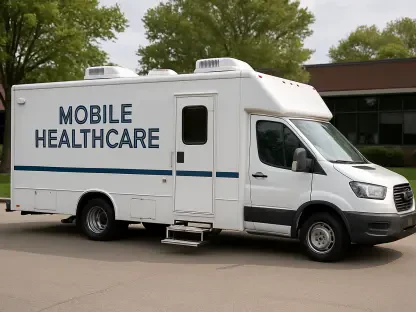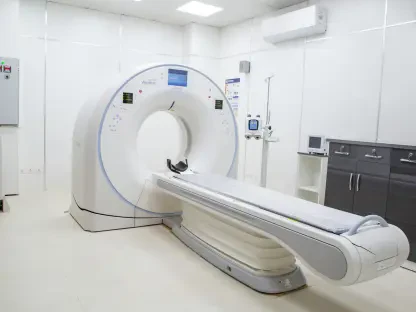In an era where digital solutions are reshaping the landscape of medical care, the recent extension of Medicare telehealth flexibilities has emerged as a pivotal development for millions of beneficiaries and healthcare providers across the nation, offering a temporary lifeline amidst ongoing uncertainties. With a government shutdown spanning 42 days now resolved through a continuing resolution known as H.R. 5371, signed into law on November 12, the pathway for sustained access to virtual care has been temporarily secured. This legislative action extends critical telehealth policies until January 30, 2026, providing relief to patients in remote areas and providers navigating financial challenges. As the healthcare sector grapples with the balance between immediate relief and long-term stability, this extension prompts a deeper examination of its implications for access, provider operations, and future policy directions. The resolution not only addresses urgent needs but also highlights the fragility of temporary measures in a system increasingly reliant on technology-driven care.
Navigating the New Landscape of Telehealth Access
Expanding Reach for Medicare Beneficiaries
The extension of Medicare telehealth flexibilities marks a significant step in ensuring that patients, particularly those in underserved or rural regions, can continue to receive medical attention without the burden of travel. Under the provisions of the recent continuing resolution, a patient’s home can serve as an originating site for non-behavioral telehealth visits, effectively eliminating geographic barriers that once limited access. Additionally, Federally Qualified Health Centers and Rural Health Clinics are now recognized as distant-site providers, broadening the network of care available to vulnerable populations. This policy also accommodates audio-only consultations for non-behavioral health needs, a crucial option for individuals lacking high-speed internet or advanced devices. Moreover, the extension supports hospice care recertification through virtual means and includes a wider array of providers such as occupational therapists and audiologists, ensuring diverse medical needs are met through digital platforms.
Enhancing Care Options and Flexibility
Beyond geographic and provider expansions, the legislative measure introduces flexibility that caters to specific healthcare scenarios, reinforcing the adaptability of telehealth in modern practice. A notable provision delays the requirement for in-person visits for behavioral health services until January 30, 2026, allowing patients to maintain continuity of care without immediate physical consultations. The continuation of the Acute Hospital Care at Home program further exemplifies how telehealth can replicate hospital-level care in domestic settings, reducing strain on facilities while prioritizing patient comfort. These adjustments reflect a growing acknowledgment of telehealth as an integral component of healthcare delivery, capable of addressing both routine and specialized needs. For beneficiaries, this translates to sustained access to critical services, while providers gain the ability to tailor care delivery to individual circumstances, fostering a more personalized approach within the constraints of a digital framework.
Addressing Operational and Policy Challenges
Mitigating Financial Disruptions for Providers
One of the immediate operational impacts of the telehealth extension lies in its approach to financial stability for healthcare providers affected by the recent government shutdown. With the lapse in funding that began on October 1, claims processing for telehealth services under Medicare faced significant disruptions, leaving many providers in a precarious position. The continuing resolution addresses this by ensuring retroactive payment for claims submitted during the shutdown period, with Medicare Administrative Contractors expected to reprocess and release funds accordingly. Guidance from the Centers for Medicare and Medicaid Services is anticipated to streamline this process, minimizing delays and alleviating the financial burden on clinicians and organizations. This retroactive measure serves as a critical buffer, allowing providers to focus on patient care rather than navigating unresolved reimbursement issues, and underscores the importance of legislative foresight in maintaining operational continuity.
Confronting the Temporary Nature of Extensions
While the extension offers immediate relief, it also casts a spotlight on the persistent uncertainty surrounding telehealth policy due to its temporary framework. The looming deadline of January 30, 2026, often referred to as the “telehealth cliff,” represents the potential abrupt cessation of these flexibilities without further legislative action, posing risks to both access and provider planning. Advocacy groups and stakeholders, including supporters of bills like the CONNECT for Health Act and the Telehealth Modernization Act, emphasize the urgent need for permanent solutions to replace stopgap measures. The reliance on short-term extensions creates a cycle of anxiety for clinicians and patients alike, who must prepare for potential disruptions in care delivery. This situation calls for proactive engagement from policymakers to establish a stable, long-term policy environment, ensuring that telehealth remains a reliable pillar of healthcare rather than a provisional fix subject to political and budgetary fluctuations.
Looking Ahead to Sustainable Solutions
Reflecting on the resolution of the recent government shutdown, the extension of Medicare telehealth policies until early 2026 provided a vital reprieve for a system under strain. It safeguarded access through innovative provisions like home-based care sites and audio-only visits, while retroactive claims processing offered financial relief to providers. Yet, the temporary nature of these measures left an indelible mark of uncertainty on the healthcare landscape. Moving forward, stakeholders must prioritize the development of enduring legislative frameworks to prevent future disruptions, with proposed bills offering a potential path to stability. Clinicians are encouraged to stay informed on updates from the Centers for Medicare and Medicaid Services to navigate operational changes effectively. The focus now shifts to collaborative efforts between policymakers, providers, and advocates to build a resilient telehealth infrastructure that can withstand future challenges and serve as a cornerstone of equitable healthcare delivery.









